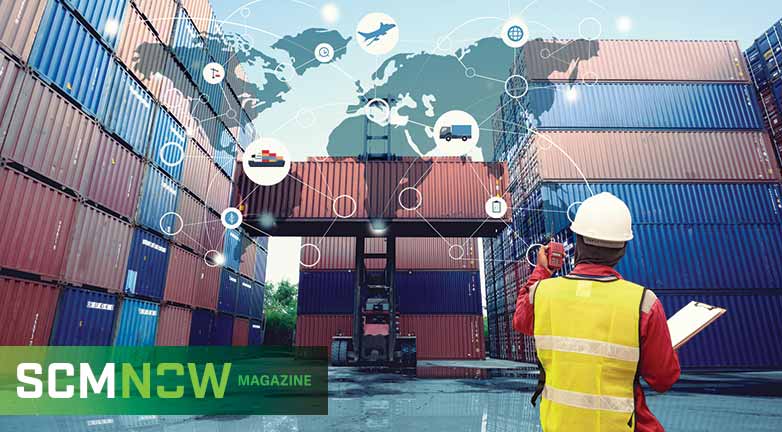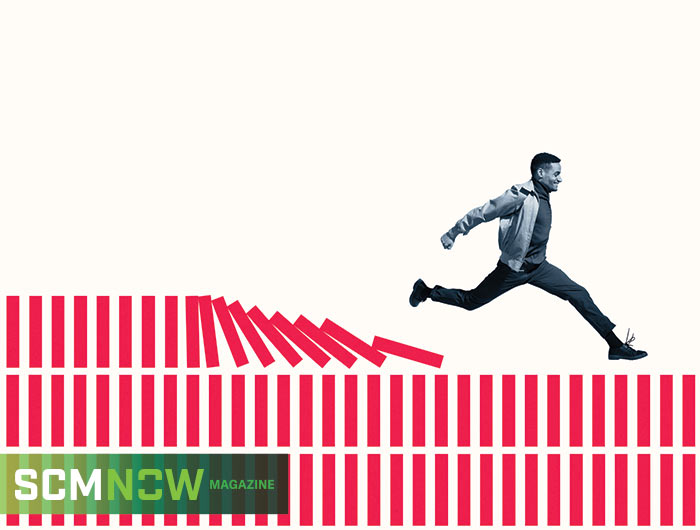We all remember the barren shelves in grocery stores during the first months of the pandemic. Aisles were devoid of toilet paper, disinfectant and frozen vegetables. For many consumers, this was their first awareness of the critical role of supply chains. For industries of all stripes, it was a wake-up call to better prepare for unexpected disruptions. Many companies were caught by surprise and suffered for their lack of agility.
Now, successful organizations are implementing an information technology (IT) practice known as enterprise architecture to better align the IT systems that manage their supply chains and to develop scenarios and IT roadmaps for future resilience. If your company still manages supply chain integrations and IT scenario planning on spreadsheets and static charts, you're putting your company at continued risk.
Hindsight is 20/20, but the warning signs of brittle supply chains have been present for years. Here are some of the more infamous examples:
- In 2007, Boeing Co. resorted to purchasing bolts and fasteners at hardware stores in order to meet the deadline for the unveiling of its new 787 Dreamliner commercial jets. The temporary fasteners then had to be replaced with U.S. Federal Aviation Administration–approved hardware, which pushed back 787 airplane production by months, according to Reuters. In the aftermath, the blame was placed on Boeing’s supply chain and, specifically, bolts supplier Alcoa Inc., which had acquired Huck Fasteners and Fairchild Fasteners a few years earlier but had not yet completely integrated their operations.
- In the wake of the 2011 earthquake and tsunami in Japan, multinational companies were alarmed by the months-long closures of key suppliers and completely blindsided by the ripple effects to tier-two and tier-three suppliers, according to The New York Times. The domino effect exposed vulnerabilities in the country’s famed just-in-time supply chain and inventory philosophy, which had never before been subjected to such a major and unexpected disruption.
- In April 2020, crude oil prices went negative for the first time in history. As worldwide demand for oil plummeted, the supply chain that feeds global oil demand could not reduce its production output quickly enough, and the system ran out of places to store crude that was in transit, which led to negative spot market prices, The Guardian reports.
The lesson is clear: Global supply chains need to be retooled for better resilience and durability. Many are achieving this goal with enterprise architecture. Global manufacturers including Bosch, McKesson Corp., Porsche and hundreds of others are architecting more resilience and efficiency right into their supply chains by speeding up their internal digital transformation initiatives and harnessing the data needed to better inform future IT investments.
How does enterprise architecture work?
At its core, enterprise architecture is a tool for dynamically mapping the relationship of every software application to every business process and every user throughout the entire enterprise, including supply chain vendors. A typical large company uses more than 1,000 different software applications — both on-premise software and cloud-based services — across tens of thousands of users. Therefore, this mapping is very complex and constantly changing.
Using enterprise architecture best practices enables companies to see how well their IT infrastructures and supply chains are serving user needs and forecast where to invest in future IT resources to gain competitive advantage. More sophisticated enterprise architecture platforms act as a central, dynamic database of all IT resources, which is updated in real time and ties into IT costing data so that companies can forecast budgets and play out potential scenarios for different IT build-out strategies.
Analyst firm Forrester quantified the cost savings of enterprise architecture. By examining multiple Fortune 1000 companies, analysts created a proxy composite enterprise with 400 IT users and 23,754 employees. They calculated that an organization matching this composite profile would recognize enterprise architecture cost benefits of $1,093,345 throughout three years, versus enterprise architecture implementation costs of $378,322. This adds up to a net present value of $715,023 for the investment and an associated return on investment of 189%.
Enterprise architecture use cases
Financial and operating benefits have been realized by a variety of industries. Here are illustrative examples of how four different industry sectors have architected better supply chain resilience using enterprise architecture disciplines and technology:
Global mining and manufacturing company Vale used enterprise architecture best practices to retool its global supply chains in the early wake of COVID-19 pandemic closures. Through an enterprise architecture exercise known as application rationalization — which exposes unnecessary, obsolete or conflicting applications — the company standardized software applications and IT processes throughout its supply chain to weed out useless complexity and to streamline its most vital data communications.
Application rationalization identifies supply chain efficiencies and roots out costs that often are hidden from the balance sheet. According to a survey of 1,534 enterprises by LeanIX GmbH, 34% of companies with about $1 billion in turnover run more than 1,000 applications. That’s a lot of technology to license and support. In a separate survey by Apptio, 77% of chief information officers (CIOs) admitted to having trouble calculating the true cost of applications deployed in their organizations. Infosys put a dollar figure to the problem. It estimates that application rationalization can save an average of $2 million per enterprise.
Beyond the application rationalization initiative, Vale also set up innovation hubs for design thinking and collaboration, established digital labs for prototyping new ideas, and deputized specific development centers to quickly develop a suite of 20 key software applications for its 150,000 IT employees to maintain continuous supply chain operations.
Such resilience and collaboration often are blocked in large enterprises by data silos and using static spreadsheets to track what applications and processes are deployed. Introducing enterprise architects within Vale’s business lines democratized data, simplified governance and allowed the necessary supply chain overhaul to happen.
Next, merchants are also grappling with how to develop working IT architectures for connecting e-commerce, mobile commerce, social commerce, interactive catalogs and other multichannel retail models to augment or replace in-store sales. In addition to customer-facing technologies, retailers need to coordinate myriad back-end payment systems, inventory management systems and omnichannel ordering systems.
Perhaps more than in other industries, retail global supply chain networks consist of stakeholders with very specific and regional ways of designing IT and business processes. Failing to put forward standardized applications and back-end IT approaches for all supply chain participants creates complexities that are nearly impossible to resolve. Retailers can streamline IT challenges and introduce resilience by migrating supply chain applications to cloud-based services.
A study by Oracle about the use of cloud computing in retail environments cited a variety of operational efficiencies, including
- reduced costs in purchasing and maintaining physical IT infrastructures
- decreased back-end complexity
- improved omnichannel experience for customers
- lower security vulnerabilities
- improved service connectivity through the use of standardized, universal approaches to internet and web services.
Cloud governance standards then can be distributed to and applied in a consistent manner across vendors and processes in the supply chain to ensure resilience.
Thirdly, Swiss car dealer AMAG Group AG is responsible for 30% of the country’s car imports and manages a complex supply chain to manage 85,000 annual car imports, 100,000 leasing contracts and 120,000 spare parts. To facilitate efficient supply chain management from manufacturer to dealer, the company operates an SAP-based IT landscape with multiple SAP industry solutions as well as self-developed software and third-party add-ons.
AMAG currently is digitizing its entire supply chain — from spare parts tracking all the way to completely digital car showrooms — to save costs and create resilience. To do so, the CIO introduced lean enterprise architecture principles and a level of experimentation and openness to new IT operating models such as DevOps and ArchOps. AMAG uses the LeanIX platform as the central source of truth for all applications and business processes operating throughout its supply chain. This helps the organization expose nonstandard apps and shut down obsolete systems. Integrations were carried out semiautomatically at first until all stakeholders were confident. Then, the process was fully automated.
Finally, software developer Atlassian Corp. PLC — maker of Jira, Confluence and many other well-known software applications — uses enterprise architecture to streamline its mergers and acquisitions (M&A) practice. Having acquired 14 companies to date, Atlassian has a goal to integrate the IT systems from acquired companies and realize the full IT value of acquisitions in just three months. By using enterprise architecture best practices, the IT team can roadmap all newly acquired IT applications within 14 days. Full IT value from each M&A deal is realized within 90 days.
Why wait to integrate?
Unanticipated shocks have laid bare the fragility and brittleness of our supply chains. At the same time, our globalized economy depends on complex supply chain networks. In the wake of the incredible interruptions of the 2020 pandemic, it’s now time to rethink and retool your own supply chain and to build in resilience and durability.


